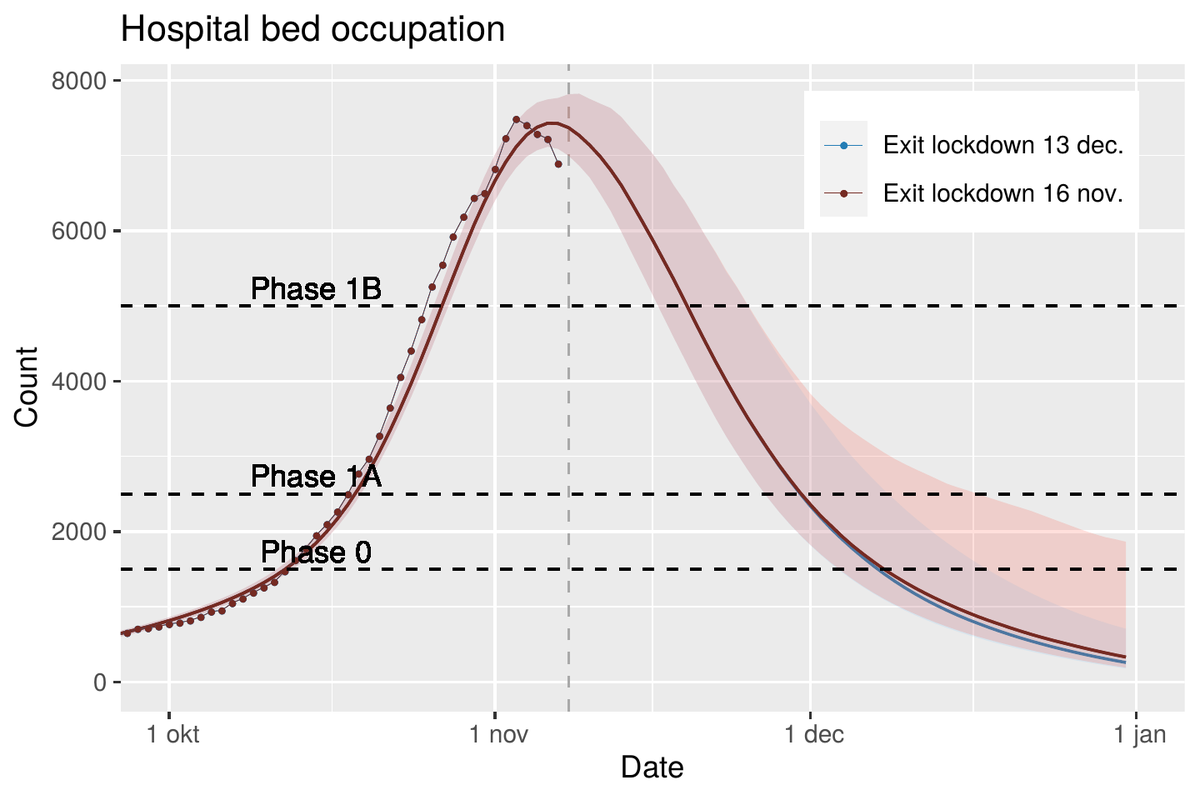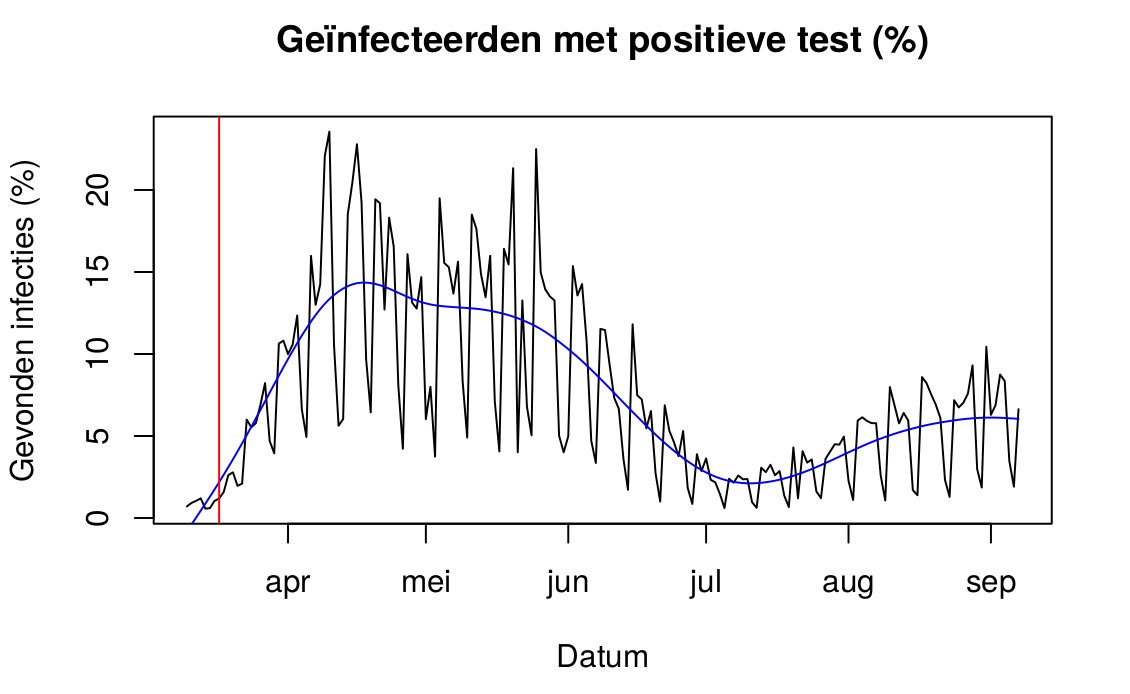
We zijn een week ver in de nieuwe lockdown. Dat betekent dat we vanaf deze week een effect mogen verwachten in de cijfers van besmettingen, en vanaf volgende week een impact op cijfers van hospitalisaties. Wat mogen we verwachten? 1/6
Hoe weten we dat maatregelen van de lockdown nog geen rol spelen in de cijfers nu? Voor de Belgische cijfers weten we dit uit modellen: de tijd van infectie tot test is gemiddeld +/- 8 dagen; van infectie tot hospitalisatie is gemiddeld +/- 13 dagen. 2/6
https://twitter.com/houterkabouter/status/1325142071196479488?s=20
Nog vóór deze lockdown was de epidemie al aan het krimpen, met een reproductiegetal 0.6 - 0.8 (gjbex.github.io/DSI_UHasselt_c… ibz-shiny.ethz.ch/covid-19-re/). Dat is vergelijkbaar, of zelfs onder, het reproductiegetal tijdens de lockdown van maart. 3/6 





We kunnen verwachten dat de lockdown dit getal verder terugdringt tot 0.4 - 0.5. Ter vergelijking nemen we
een scenario waarbij de lockdown al wordt opgegeven
na de verlengde herfstvakantie op 16 november, waarna we zouden terugvallen op de maatregelen van 19 oktober. 4/6
een scenario waarbij de lockdown al wordt opgegeven
na de verlengde herfstvakantie op 16 november, waarna we zouden terugvallen op de maatregelen van 19 oktober. 4/6
De lockdown is er om ziekenhuizen te vrijwaren. Het aanhouden van de lockdown zorgt voor een snellere daling vanaf december. Indien we de lockdown zouden opheffen vanaf 16/11, zal dit voor ziekenhuizen wellicht weinig verschil maken. 5/6 

Als de lockdown dient om ziekenhuizen te vrijwaren is het logisch om om deze op te heffen zodra de er voldoende zekerheid is over de inschatting van het reproductiegetal vóór de lockdown, door een verdere daling van de hospitalisatiecijfers deze week. 6/6
• • •
Missing some Tweet in this thread? You can try to
force a refresh













